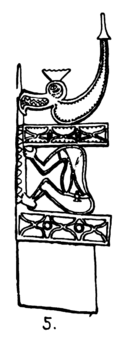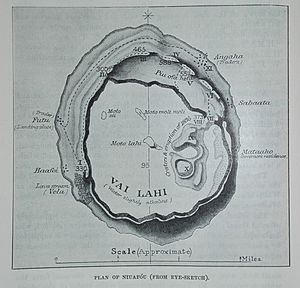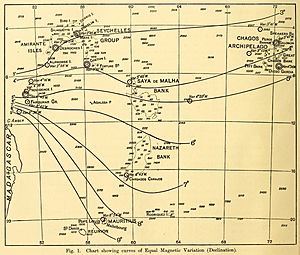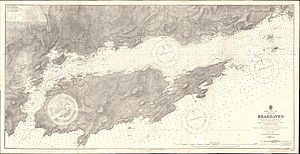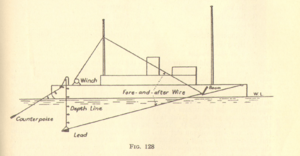Boyle Somerville facts for kids
Quick facts for kids
Boyle Somerville
|
|
|---|---|
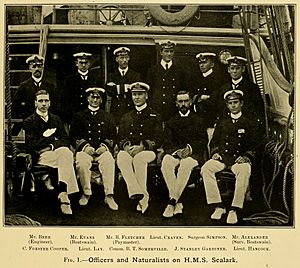
Officers and naturalists on HMS Sealark in 1905. Boyle Somerville is in the centre of the front row.
|
|
| Born | 7 September 1863 Castletownshend, County Cork, Ireland |
| Died | 24 March 1936 (aged 72) Castletownshend, County Cork, Ireland |
| Allegiance | United Kingdom |
| Service/ |
Royal Navy |
| Years of service | 1877–1919 |
| Rank | Vice Admiral |
| Commands held | HMS Devonshire HMS King Alfred HMS Amphitrite HMS Argonaut HMS Victorian |
| Battles/wars | Anglo-Egyptian War First World War |
| Awards | Companion of the Order of St Michael and St George |
| Spouse(s) |
Helen Mabel Allen
(m. 1896) |
| Relations | Edith Somerville (sister) |
Henry Boyle Townshend Somerville (born September 7, 1863 – died March 24, 1936) was an Irish naval officer who reached the rank of Vice-Admiral in the Royal Navy. He was also a talented author who wrote about the sea, as well as about different cultures and ancient sites. Somerville was sadly killed in 1936.
Contents

Boyle Somerville was born in Castletownshend, a town in County Cork, Ireland. He joined the Royal Navy as a young cadet in 1877. His first time serving at sea was in South America in 1880. He then took part in the Anglo-Egyptian War in 1882. After that, he spent four years serving in China.
Somerville chose to become a Hydrographic Surveyor. This meant he would map oceans, coastlines, and underwater features. He liked this job because it offered more freedom than other parts of Navy life.
As a lieutenant, Somerville helped survey the coast of Queensland, Australia, and the New Hebrides (now called Vanuatu) in the South Pacific. While in Vanuatu, he studied the local cultures and people, and he later published his findings. In 1893–94, he was surveying in the South Pacific with HMS Penguin. They explored the Kermadec Trench between New Zealand and Tonga. There, they found a depth of about 9,430 meters (5,155 fathoms), which was the deepest ocean spot ever found at that time!
They also mapped New Georgia in the Solomon Islands. Somerville wrote about the islands and their people. He collected many interesting items from the Solomon Islands, like ornaments and tools, which are now in the Pitt Rivers Museum in Oxford, England. In 1895, while surveying Tonga, Somerville visited Niuafo'ou island and wrote an early description of it.
Somerville was promoted to Commander in 1901. He then surveyed the Persian Gulf from 1902–03. He also mapped areas in Ceylon (now Sri Lanka) and the Indian Ocean between 1904 and 1907. In 1905, Somerville and his ship, HMS Sealark, joined a scientific expedition in the Indian Ocean. He helped with the scientific work and made observations about the ocean and Earth's magnetic field.
From 1908 to 1914, he surveyed British coastal waters. He was promoted to Captain in 1912 and then to Vice Admiral in 1919. He was known as a very skilled surveyor. Before the First World War, Somerville even invented a special machine that used steam to measure ocean depth while a ship was moving.
Exploring Ancient Sites
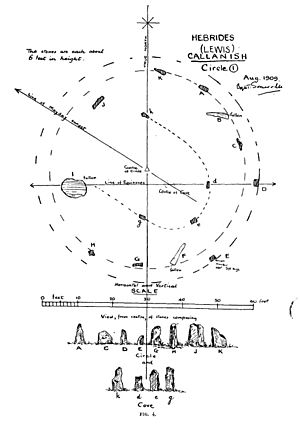
In 1908, while surveying in Britain, Somerville read a book that suggested ancient stone circles and standing stones might have been used to track the stars. This sparked his interest! He then spent a lot of time surveying and sometimes digging at these ancient sites in Britain, Ireland, and other places. He became an expert in archaeoastronomy, which is the study of how ancient people understood the sky and used it for their monuments.
Some of the famous sites he studied include the Drombeg stone circle in County Cork, Ireland, and the Callanish Stones in Scotland. He wrote articles about his discoveries and ideas.
World War I and Later Work
During the First World War, Somerville served in the North Atlantic from 1914 to 1916. He commanded several ships, including HMS Victorian, HMS Argonaut, HMS Amphitrite, and HMS King Alfred. Their operations were based around islands like Madeira and the Canary Islands. Because there were no safe harbors, the ships had to stay at sea all night to avoid submarine attacks. This meant one time they were at sea for 385 nights in a row!
Somerville also helped with "diplomacy of force," which meant making sure other countries didn't help German ships. In 1917, he was in Halifax, Nova Scotia, helping to protect ships traveling in convoys across the Atlantic. He was also involved in the British Secret Intelligence Service, helping to develop how the Navy gathered and analyzed important information. In February 1919, he received an award called the Companion of the Order of St Michael and St George for his valuable service during the war.
Retirement and Legacy
Somerville retired from the Navy in August 1919 and returned to his family home in Castletownshend, Ireland. Even in retirement, he continued to work for the Admiralty, helping with ocean mapping and tidal studies. He published several books, including Ocean Passages for the World in 1923, which is still used today. He also wrote articles about his surveying adventures for a magazine. He continued his archaeology work, publishing his last paper in 1931.
Sadly, Somerville was killed on March 24, 1936, by the Irish Republican Army (IRA). He answered a knock at his door and was shot. A note was left claiming he had recruited young boys for the British Army. However, his family said he only gave references to young people who asked for them. Some people also thought the attack might have been meant for his brother, who was more well-known. An IRA leader later said the shooting was a mistake and that Somerville was only meant to be taken hostage.
Somerville was the younger brother of the famous novelist and artist, Edith Somerville. She finished one of his books, Will Mariner, after his death. He is buried in St. Barrahane's Church in Castletownshend.
Published Works
- Ocean Passages for the World. Published for Hydrographic Dept., Admiralty, by HMSO (1923).
- A collection of articles published between 1919 and 1927 in Blackwood's Magazine, describing his surveying work and World War 1 experiences.
- The Chart-Makers. Blackwell & Sons (1928). This book is a collection of some of his articles.
- Commodore Anson's Voyage into the South Seas and Around the World. Heinemann. (1934)
- Will Mariner. Faber & Faber. (1936)
- Records of the Somerville Family of Castlehaven & Drishane from 1174 to 1940 (with Edith Anna Somerville). Published by Guy & Co, Cork, 1940.
|


